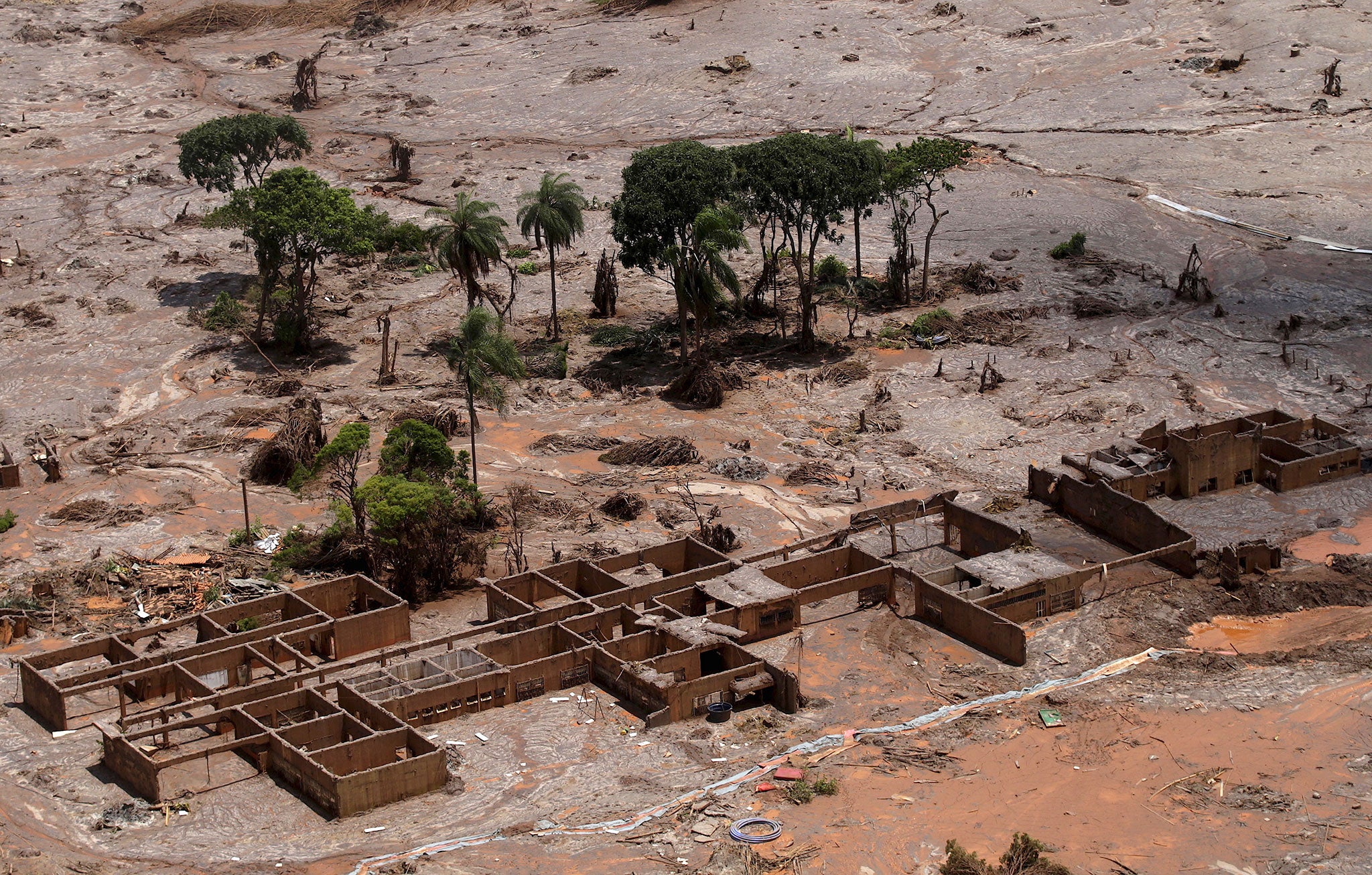BHP Billiton to be sued by investors over dam collapse that caused Brazil's worst ever environmental disaster
Mining giant knew dam was at imminent risk of breaking and the damage that would cause, law firm alleges

BHP Billiton faces legal action from shareholders who say the mining giant misled them over safety measures at a dam in Brazil which broke, killing 19 people and causing Brazil’s worst ever environmental disaster.
When the Fundão dam broke in 2015, waste from an iron ore mine operated by Samarco, a joint venture between BHP and its partner Vale, devastated the local area in Minas Gerais state.
A red wave of clay, sand and water polluted miles of river, killing aquatic life, leaving hundreds of people homeless, and flowing out to sea.
Australian law firm Phi Finney McDonald now plans to sue the multinational, which is listed on stock markets in London, Sydney and Johannesburg, on behalf of investors.
It alleges that the company - one of the largest mining firms in the world with revenues of $38bn (£28bn) - knew that the dam was at imminent risk of breaking but did not tell markets, in breach of regulations.
BHP’s share price collapsed more than 20 per cent in the days after the disaster.
The mining giant has said publicly that it was not responsible for the dam’s collapse, that it complied with Brazilian law and that safety has always been a key concern.
Brett Spiegel, Principal Lawyer at Phi Finney McDonald said: “There are strong grounds to allege that from at least 21 October 2013, BHP failed to ensure that appropriate safety measures were in place at the Fundão dam, including a proper system to warn people living downstream of the dam in the event of a dam failure.
“Despite this, BHP repeatedly assured the market that it put it safety first and held itself to the highest standards of environmental safety in its projects across the globe.”
“BHP did not live up to its promise to prioritise the safety of the people and environment of Brazil, with tragic consequences,” Mr Spiegel alleges.
“Conditions at the Fundão dam deteriorated to the point that BHP knew of the imminent risk that the dam would collapse.
“We allege that the company was also aware of the serious human, environmental, and financial consequences that would result. In our opinion, BHP breached its disclosure obligations by failing to disclose that risk to the market.”
“The claim seeks to hold BHP accountable and to recover the substantial loss and damage suffered by investors as a result of BHP’s alleged conduct,” he said.
In the period that followed the dam collapse, BHP’s stock price plunged across all markets, falling 22 per cent in Sydney and 23 per cent in both London and Johannesburg between 5 November 2015 and 30 November 2015. The falls wiped $25bn off the company’s value.
The law firm said it has investigated the construction of the dam, the causes of its collapse for more than six months.
It will bring the claim on behalf of investors that bought BHP shares between 21 October 2013 and 9 November 2015.
This includes shares in BHP Billiton Limited traded on the Australian Securities Exchange and in BHP Billiton Plc traded on the London and Johannesburg Stock Exchanges. The class action will claim losses suffered by shareholders up to and including 30 November 2015.
BHP Billiton could not be reached for comment on Wednesday.
Join our commenting forum
Join thought-provoking conversations, follow other Independent readers and see their replies
Comments